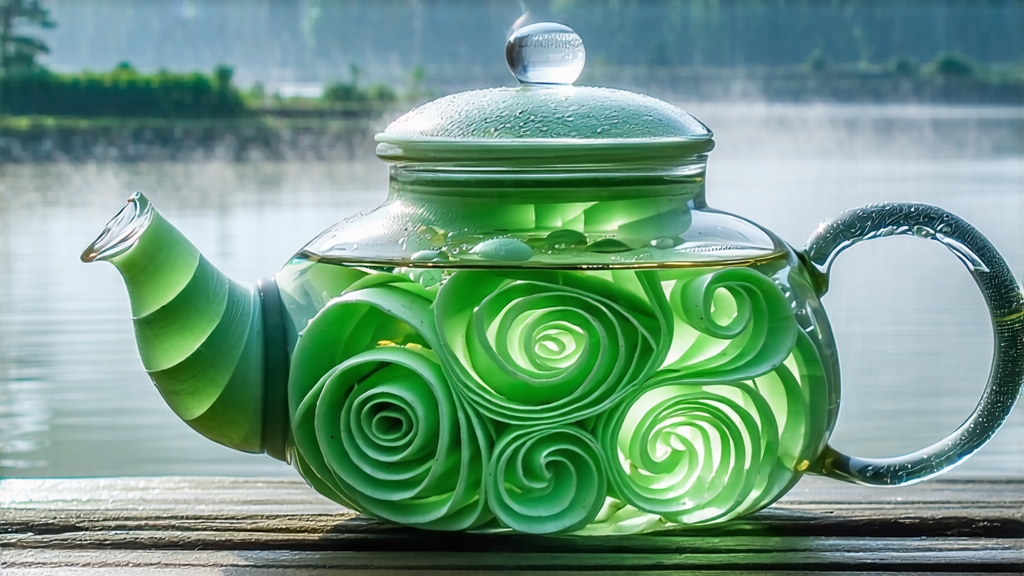
Biluochun, whose name translates literally to “Green Snail Spring,” is one of China’s ten most celebrated teas, yet it remains a quiet jewel outside the circles of devoted tea lovers. Grown in the mist-laced hills that rim eastern Taihu Lake in Jiangsu Province, this green tea is prized for the tight spiral shape of its leaf, its downy silver tips, and an aroma so delicate that locals joke it can be “scented before it is seen.” To understand Biluochun is to step into a micro-climate where lake, fruit trees, and human artistry have conspired for more than a thousand years to capture spring in a cup.
History and Legend
The first written record appears in the Tang Dynasty’s Classic of Tea, but the tea gained imperial fame during the Kangxi reign (1661-1722). According to palace archives, the emperor was traveling incognito south of the Yangtze when he was offered a small cup of an unnamed local tea. Struck by its vivid jade liquor and orchid-like fragrance, he asked the name. Told it was “Xia Sha Ren Xiang” (“scary fragrance”), he found the moniker inelegant and renamed it Biluochun on the spot, inspired by the snail-shell curl of the dry leaf and the season of early spring. The name stuck, and annual tribute batches were rushed to Beijing by canal boat within days of picking.
Terroir: Lake, Mist, and Apricot Blossoms
Unlike mountain teas that rely on altitude, Biluochun thrives at barely 100–300 m above sea level. The regulating thermal mass of Taihu creates nightly fogs that filter sunlight and lock moisture into the hillsides. Tea gardens are interplanted with peach, apricot, and plum trees; their blossoms drop petals that decompose into fragrant mulch, while their roots share mycorrhizal networks that subtly alter leaf chemistry. The result is a tea that carries natural floral notes without any added scenting—an agricultural serendipity impossible to replicate elsewhere.
Cultivars and Grades
The original cultivar is the small-leaf “Dongting群体种,” but clonal selections such as “Dongting 11” and “Su Cha 3” are now common for higher yield. Grading follows a 1–7 scale based on picking date, bud-to-leaf ratio, and spiral tightness. Supreme Grade 1 is picked on the first warm days after Qingming (early April) and contains only unopened buds plus the imminent first leaf, each curl no larger than a soybean. By Grade 4 the leaf is longer, the aroma still charming but less haunting, and the price drops ten-fold. International buyers often encounter Grade 3–5 labeled simply “Biluochun,” so knowing the harvest window is critical.
Plucking Ritual
Pickers begin at dawn when the leaf surface is still wet with dew; the moisture acts as a natural antiseptic and keeps the bud supple until it reaches the village workshop. A seasoned plucker fills a shallow bamboo tray in twenty minutes, taking only the “sparrow’s tongue” standard: bud plus half-open first leaf, about 2 cm long. The tray is never heaped deeper than 3 cm to prevent bruising. By 9 a.m. the harvest is weighed, paid in cash, and rushed to the firing shed—green tea waits for no one.
Crafting the Spiral: Six Steps in Six Hours
- Withering: trays rest on racks in a drafty corridor for 60–90 min, reducing moisture by 10 % and softening cell walls.
- Kill-green (shaqing): leaves are tumble-tossed in a drum heated to 180 °C for 3 min, deactivating oxidative enzymes while preserving chlorophyll.
- First rolling: the hot leaves are transferred to a bamboo mat and kneaded by palm pressure for 8 min; proteins begin to align, setting the stage for the signature curl.
- Primary shaping: the most artistic step. A master straddles a low wok maintained at 80 °C, rolling tiny batches in a figure-eight motion. Thumb and forefinger pinch the leaf tip, curling it inward like a snail shell. Wrist speed, pressure, and moisture read by touch decide whether the tea will keep its downy coat or shed it. After 15 min the leaf moisture drops to 30 %.
- Re-firing: temperature drops to 60 °C; leaves are gently shaken for 10 min to fix the shape and remove stray hairs